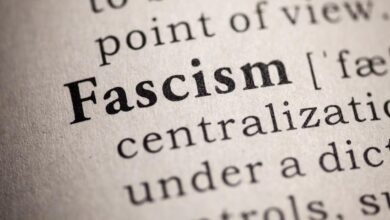Indiana: Forecasts Show $2B Less in Revenue

by Whitney Downard, Indiana Capital Chronicle
April 16, 2025
In a sharp turnaround from the flush financial fortunes of the last budget cycle, Indiana’s projected revenue for the next budget cycle fell by $2 billion according to new forecast data publicized on Wednesday.
The current budget cycle for the 2025 fiscal year is also short by an estimated $400 million, though closing that gap will likely rely on reserves.
Indiana’s tax revenue is still growing but not at the rate anticipated.
According to chief budget architects Sen. Ryan Mishler and Rep. Jeff Thompson, “everything is on the table” when it comes to potential cuts.
“We just have a lot of tough decisions to make and we have to be disciplined,” said Mishler, R-Mishawaka. “… K-12 education is the last thing we want to do anything with so I would prefer to put everything else in front of that.”
When it came to increasing so-called sin taxes — whether on gaming, cigarettes or alcohol, Thompson didn’t rule it out.
“All of those things have to be discussed,” said the Lizton Republican.
For longtime lawmakers, the news invoked memories of budgeting after the 2008 recession, when the state weathered more than a billion-dollar shortfall.
“This one scares me a lot more because the number is a lot higher. And back then, if you remember, we had federal money to backfill. We don’t have any federal money to backfill. This is all on us,” said Mishler. “So we’re going to have to live within our means.”
With a goal to finish the 2025 legislative session next week, lawmakers don’t have much time to identify potential cuts — though the two Republicans anticipated long nights ahead to meet that preferred deadline.
Democrats pointed to the need to protect Hoosiers during uncertain economic times and minimizing harm through state resources.
“We are extremely concerned for Hoosiers across the state, because the same underlying conditions that are impacting the state budget are impacting Hoosiers,” said Sen. Fady Qaddoura, D-Indianapolis. “From the price of goods and services to the challenges of those who rely on retirement funds to small businesses relying on their products that they ship.”
Qaddoura noted that Senate Democrats had pushed to incorporate sin taxes into the budget earlier in the week, adding that a $2 cigarette tax increase would bring in an estimated $800 million.
Moments after release of the downgraded forecast, the Indiana Chamber of Commerce called for the General Assembly to pull the trigger on that tax.
“A big action still on the table this legislative session is a minimum $2 per pack increase to the cigarette tax,” said President and CEO Vanessa Green Sinders. “We urge lawmakers to put the increase in the state budget – both for the positive impact on the health of Hoosiers who smoke and the additional revenue.”
What happened?
The December forecast data included roughly $800 million in new revenue for the state over the next two years, though nearly all of that came in the first year. Now even that marginal growth is gone.
Much of the loss can be attributed to economic uncertainty, including worries about the impact of tariffs in the country’s most manufacturing-intensive state.
“When the U.S. gets a cold, Indiana gets pneumonia,” said Rep. Greg Porter, D-Indianapolis. “We’re a manufacturing state and (with) the tariffs and other issues out there in the federal government … this really affects our bottom line.”
According to an analysis from Axios Indianapolis, Indiana is the third-most reliant state when it comes to China, which imported $6.1 billion in Hoosier goods in 2023. More than half of that was in pharmaceuticals and medicines followed by oilseeds and grains.
Democrats pointed to potential areas for savings, including pushing back anticipated income tax cuts and clawing back money from the Indiana Economic Development Corporation.
Qaddoura went even further, targeting the use of vouchers by wealthy families to attend private schools.
“I think if we’re looking at K-12 cuts, we definitely need to look at reversing the voucher program back to the 2021 level to be sure that the ultra-wealthy are not benefiting while we’re cutting … funding for K-12 education across the state,” he said.
He said such a move would save an estimated $309 million.
Potentially the biggest bill in the 2025 session altered property taxes with an explicit goal to give two-thirds of homeowners relief, at a loss for local units of governments and school corporations.
Thompson said that effort, which has been signed into law, doesn’t need to be revisited in light of the news about the state’s finances.
“I can tell you right now that the Indiana projected revenue is probably less than most locals. We’re probably in a tougher spot than they are,” Thompson said.
Gov. Mike Braun focused on cutting waste, eliminating overhead, and getting back to the basics.
“We must finalize a biennial budget that respects the revenue forecast and protects Hoosier taxpayers from a worst-case scenario,” he said. “I will work with the General Assembly to craft a budget that is structurally balanced, maintains strong reserves, and funds vital services like public safety and education.”
What about Medicaid?
In a small spot of positive news, Mishler noted that the growth of Medicaid appeared to be slowing.
Medicaid rolls were just over 1% lower than previously estimated, a difference of less than 30,000 Hoosiers. More than 2 million residents rely on the program for their health care coverage.
But, as an entitlement program, much of the program can’t be cut — meaning that the state will likely remain committed to spending roughly $10 billion over the next two years.
“We’re trying to make some changes to try to help us in the Medicaid space,” said Mishler, pointing to his efforts under Senate Bill 2.
However, much remains uncertain about Medicaid’s future, especially with several large pieces of legislation still up in the air.
Under Mishler’s bill, most able-bodied working-age adults would be required to work at least 20 hours a week to keep their benefits.
Additionally, changes to the state’s calculation of the hospital assessment fee or implementing the managed care assessment fee weren’t included in Wednesday’s presentation, though the latter could bring in $1.4 billion if fully implemented.
But Mitch Roob, who helms the agency overseeing Medicaid, said he didn’t believe the Trump administration would allow the state to leverage the tax to the maximum extent.
GET THE MORNING HEADLINES.
Indiana Capital Chronicle is part of States Newsroom, a nonprofit news network supported by grants and a coalition of donors as a 501c(3) public charity. Indiana Capital Chronicle maintains editorial independence. Contact Editor Niki Kelly for questions: info@indianacapitalchronicle.com.



